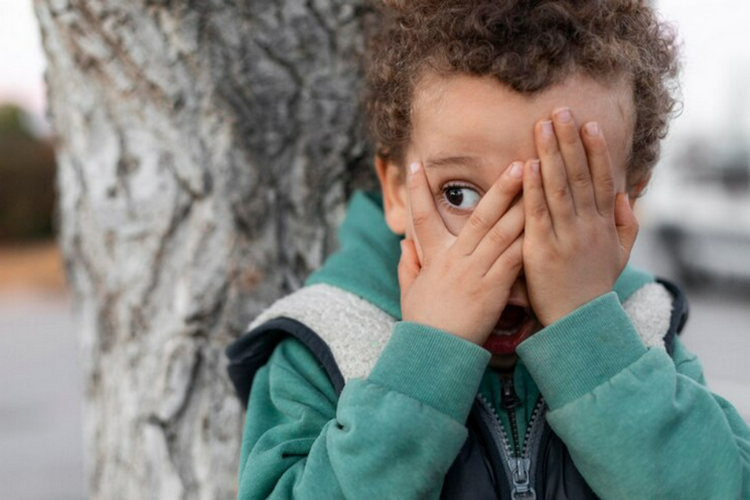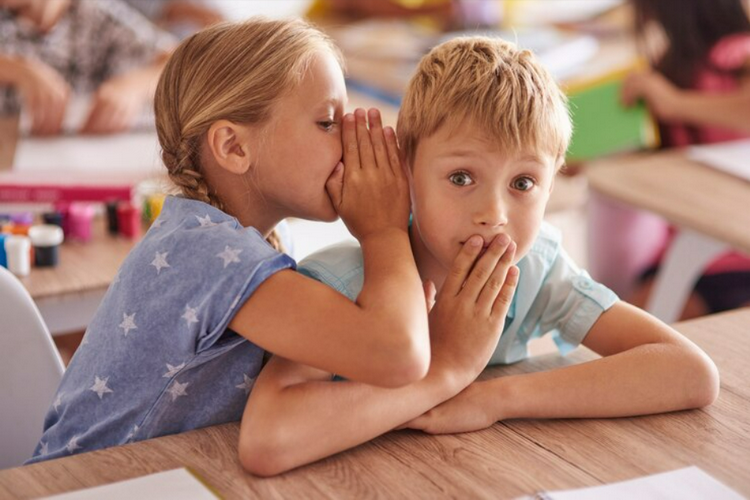


Special Needs Parenting – Staring. We all seem to do it at some point, for some reason. We’ve all been stared at by someone else too. Staring at people is a social behavior, albeit one that generates discomfort for the one receiving the stare. Most often, people’s stares are directed toward those with some type of physical difference. They see something which appears out of the ordinary, and the tendency is to gaze at the subject out of curiosity.
Perhaps staring is an attempt to make sense of a perceived difference. When a person’s physical appearance may not be the reason for a stare, someone’s behavior could be the cause. Whatever the case may be, staring at people is generally a social behavior thought of as rude. As a special needs parenting, staring at people is an issue that parents and differently-abled children often encounter.

When a child or teen with autism is stared at, it’s usually because s/he is displaying some type of social behavior that deviates from what society thinks of as normal. Usually, a person with autism does not appear different from others. (Although wearing headphones for noise reduction can attract attention). A person with autism may move around constantly or perhaps in a repetitive manner.
S/he may rock, sway, jump, clap, or twitch. The person with autism could have vocal stims, which means that s/he utters sounds that a neurotypical child generally would not. (An example of a vocal stim is making an eeeeeee sound out loud, over and over).
Sometimes, a person with autism has trouble modulating volume and may vocalize quite loudly. A non-speaking person could have a communication device that others hear and turn their heads toward. Of course, a sensory meltdown in public will prompt staring. (And that’s the last thing a parent needs in that kind of a moment).
When you are on the receiving end of someone’s stare, there are several ways to handle it gracefully. Although the mama or papa bear instinct might prompt you to glare back or exclaim, Take a picture! It’ll last longer! those responses might not get you anywhere. Instead, use the episode to provide some education.
Start with a smile. Catching the eye of someone who is staring at your child with autism can easily be done and followed with a smile. Give the starer the benefit of the doubt; maybe s/he didn’t know the glance in your direction lasted way too long for comfort. A smile can bring an end to the fixated look, and everyone can move on.

If time permits, ask, Do you have a question for me? It’s a noninflammatory remark that could invite conversation. This potentially opens the door for education. Of course, you would need to decide if you are willing to answer the question they pose, and whether you want to discuss something in front of your child.
Sometimes just asking Is there something you want to ask me is enough to stop the stare and prompt them to move along. If you are willing to answer whatever pops out of their mouth, just have some practiced responses you are comfortable with so you don’t walk away regretting what you said.
If your child with autism is being stared at, using humor or a clever comment can work wonders. If you see someone staring, you can say, I guarantee – we are not celebrities and add a giggle. Or try, There sure is a spectrum of abilities out there, right? How about this comment: I know! My kid is so darn cute I can’t take my eyes off him either!
Another response could be, Have we met before? And the last suggestion: Do you work at my (son’s/daughter’s) school? The starer will likely say no, to which you can respond, Oh. You were looking at him like you know him. Any comment that will discourage the staring instead of antagonizing the situation is a good comment.
Families with a child with autism can feel reluctant to venture into the community for fear of staring. Realizing that it’s going to happen is where you begin; from there, try to remember it’s partly human nature to stare at something or someone we don’t comprehend right away. Then, have a game plan ready for when it does happen so that you don’t take it personally. Focus on the education aspect, and keep smiling.
Now, let’s look at the flip side to the issue of staring. Instead of being in the family that receives stares, perhaps your child is the one doing the staring. Children, until they are taught that staring at people can be impolite, will naturally look at something that stands out as novel or seems unfamiliar. Any child, including one with autism, needs to be taught appropriate ways of interacting when coming across something or someone that stands out as different.
Let’s look at some ways to help children understand what to do when they encounter someone different. First, as a parent or caretaker, focus on support and guidance. Instead of scolding, instead of ignoring, acknowledge what the child may be seeing or hearing. Say, Oh, I see you are looking at that person. He’s wearing headphones, isn’t he?
Or, I hear someone making some noise too. She’s looking at a toy. Try to direct attention to what is being seen or heard, rather than labeling the person or drawing attention to the social behavior.
Next, if a child asks why someone around them looks different or sounds different, an appropriate answer could be, I’m not sure, but we can respect them and give them some space or a friendly wave. If circumstances seem right, the parent or caretaker can encourage their child to say hello or ask the other child his name to show good social behavior.
As a parent in that situation, a good approach might be to simply ask, How old is your child? Often when the friendly conversation is initiated, much of the awkwardness created from the initial stare disappears.
Last, if your child is the one doing the staring, a simple statement to the family or person being stared at can diffuse a tense moment. I’m sorry, we’re still learning how to ask questions respectfully.

Whether on the receiving end of someone’s glaring look or dealing with a child who is prone to staring, it’s important to remember that it’s human nature to look at things we don’t know about with prolonged curiosity. Knowing just how briefly to look is a learned social skill. Children can be taught to limit their gaze.
Adults who stare too long should really know better. In any event, let’s recognize that we are all human beings with varied and valuable traits. Our differences do not define us. If being stared at…smile and wave. If caught staring, smile and wave.
A simple gesture can work wonders. But keep in mind the techniques suggested in this blog if you find yourself uncomfortable with being glared at, or if you need some tips in coaching others. Like Eleanor Roosevelt said, “No one can make you feel inferior without your consent.”
More resources can be found in our Special Needs Directory
For more blogs about autism click here and here.
Just enter your email address below and you’ll get an email every time we publish a new post!
Categories :
Tags :
Keri is a special needs parent and a veteran high school English and journalism teacher turned writer. She enjoys reading, hiking, gardening, cooking, traveling, wine tasting, and practicing yoga. Both she and her son love to create art. She has a passion for educating people on all things autism. Visit her blog at https://kerimehome.com.
View All PostsNotifications